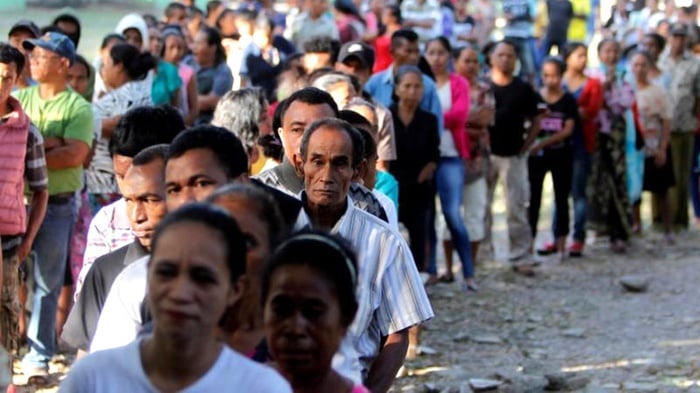 |
| Xianbin Yao, Director General of ADB’s Pacific Department |
ADB’s flagship annual economic publication, Asian Development Outlook 2016, projects that Pacific economies will grow by an average 3.8% in 2016, down from 7.0% last year, mainly due to pressures faced by Papua New Guinea (PNG) and Fiji—the region’s largest economies.
Fiji faces economic difficulties in the aftermath of last February’s Cyclone Winston. Early assessments indicate that total damage and losses from the cyclone—the worst on record in the southern hemisphere—will likely exceed $500 million, which is roughly equivalent to 11% of Fiji’s gross domestic product (GDP). This is expected to have a major impact on growth in 2016, particularly in sugar production.
“Yet again, a weather event of historically unprecedented severity has hit a South Pacific island nation. The effects on the country’s economic performance are significant and likely to be lasting,” said Xianbin Yao, Director General of ADB’s Pacific Department. “Once again, this underscores the importance of international assistance to Pacific countries to enhance their resilience to disasters. ADB, together with other development partners, are stepping up our support to countries in the region to develop climate-proofed infrastructure, build fiscal buffers and expand access to disaster risk financing.”
Papua New Guinea faces serious fiscal challenges, as weak commodity prices have resulted in shortfalls in mineral sector revenues. Consequently, GDP growth is forecast to ease to 4.3% in 2016—less than half last year’s rate—and to slow further to 2.4% in 2017.
Elsewhere in the region, Timor-Leste’s, growth is forecast at 4.5% in 2016 and 5.5% in 2017 (up from 4.1% in 2015) on rising public and private investment. Encouraging private investment remains critical to diversifying the economy and maintaining growth in the face of declining petroleum production and rising pressures on the country’s Petroleum Fund resources.
Growth in the Solomon Islands economy is seen to moderate to 3.0% in 2016 and 2.8% in 2017 with expected declines in logging exports and development assistance. Government plans for fiscal expansion to stimulate growth need to consider gradual spending increases to foster efficient use of resources, while safeguarding macroeconomic stability.
As Vanuatu’s economy recovers from last year’s Cyclone Pam, growth is seen to pick up to 2.5% in 2016 and 3.8% in 2017. However, issues concerning safety of the runway at the Port Vila international airport, severe El Niño conditions harming agriculture, and political uncertainties pose risks to the economy.
The outlook for the North Pacific economies—the Republic of the Marshall Islands and the Federated States of Micronesia—is generally positive, but hinges on their ability to access capital grants for major infrastructure projects. In Palau, growth is projected to ease this year with tourism facilities reaching capacity limits, but should increase next year when new hotels are scheduled to open.
Growth in the South Pacific economies of the Cook Islands, Samoa, and Tonga is seen to remain steady but low over the outlook period. Public investment, additional sources of finance, and business environment reforms are expected to drive growth prospects.
Record high fishing license revenues and investments from development partners are underpinning rising public expenditure and growth in the small island economies of Kiribati, Nauru, and Tuvalu. Achieving fiscal and economic stability and sustainability remains a challenge for these countries given the volatility and uncertainty of their sources of growth and revenues.
www.finchannel.com
Newseditor/BUSINESS
Pacific Economic Growth Slowed by Fiscal, Disaster Related Challenges
http://www.finchannel.com/index.php/business/56087-pacific-economic-growth-slowed-by-fiscal-disaster-related-challenges


















